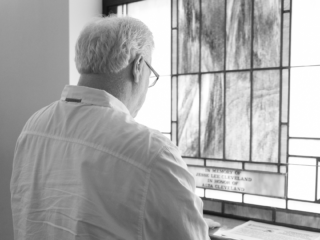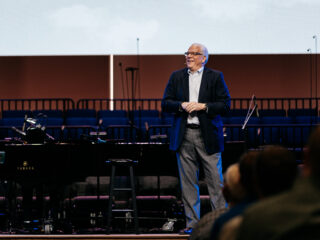I knew things were changing several years ago when our church began the second phase of our construction and we were ready to build a gym. Everything was going according to plan until the student ministers asked us not to build a gym. A gymnasium, they told us, wouldn’t support the kind of ministry our student leaders envisioned for this current generation of students. (Have you ever tried to balance sound levels for a band in a gym?)
Of course, when we made the announcement, we had a firestorm of blowback — not from the students, but from their parents. Why wouldn’t we build a gym? All of them had grown up playing basketball at the church. Their children should have the same opportunity.
There was just one problem. Their children didn’t play basketball after school. They all went to Starbucks and texted each other with the latest gossip and homework assignments. If we wanted to reach students in this generation, we needed to build a facility that supported the way students did life. We needed a facility that supported multiple worship experiences, workshops, conferences, and a cafe that served really good coffee.
I’m a boomer. My generation moved through the system like the last meal swallowed by a python. I was always in the largest class of every school I attended. Every city I lived in was growing. My tribe went to big high schools and shopped at malls as large as small cities. The malls had everything. Every kind of store, every kind of restaurant — and some even had amusement parks in them. As a teenager, you went to the mall just to walk around in circles to see who else had come to the mall. You could shop, eat, see a movie, and have a late-night snack before you went home. And you could do it all under the same roof.
We built our churches the same way. Megachurches became Jesus malls. Families could drop off their children, meet friends for lunch, take music lessons, and learn about interesting places around the world at the Missions kiosk. The family pulled into the color-guided parking lot and once the family entered their facility, everyone went their own way. Adults went to the adult areas. Children went to the children’s area, students went to the student areas, and everyone met back at the car after church was over. The parents would talk about the worship service. The children would show off their crafts and the students would sulk in the back of the car until the family began to argue about where to eat for lunch.
Now, the boomers are senior adults. We’ve sold our homes and moved closer to our children. The large churches we built struggle to fill the sanctuaries on Sunday mornings and many have started renting out part of their facilities as offices for non-profits.
What happened? Simple. People changed. Millennials wanted something else. They don’t go to chain restaurants. They go to local places. They want to know the chef and know what farm the lettuce came from. They shop in boutiques or online. They don’t go to malls.
They want their churches to be in the communities where they live and where their children go to school. They would prefer to walk to church. They’re not concerned if the pastor is a great orator. They want to know their pastor is genuine; a human being that’s on the journey just like they are, trying to figure it all out. They’re not looking for an expert. This generation knows there are no experts. From the economy to COVID, this generation knows every expert is just guessing. Instead of listening to one person, they prefer to listen to several colleagues. They find truth in the combination of opinions, facts, and experts. They’re looking for a church where they can engage. A community where they are needed.
And preferably, they want a church they see every day. They want their church to be part of the neighborhood. The church has to be seen as a service center to the neighborhood and world. Sacred structures which open only once a week won’t be funded by millennials and Gen X-ers. The facility has to be designed to support the mission of serving the world in the love of Christ.
Across the nation, corporations are realizing they don’t need the same amount of square footage to accomplish their work. People are working from home, sharing workspaces and offices. Churches are in the same boat. We no longer need as much square footage to accomplish our mission. We can build multifunctional facilities that serve several purposes during the week in order to better serve our communities. In the future, the churches will be smaller and closer together which will allow them to share the opportunities and burdens of loving a local community. You won’t see denominations in the future. You’ll see neighborhood clusters joining together for the good of their communities.
The days of building a church with a prefabricated formula never worked really well. Now, they don’t work at all. These days, each facility is going to have to be designed uniquely for every ministry setting depending upon community needs. Our communities have become little worlds unto themselves. Churches are going to have to view their neighborhoods as the mission fields they are.
And each one of them will take a unique approach to best reach the people who live in these communities. One size, one way, one method, won’t ever succeed in our post-pandemic world. Then again, it never has.









